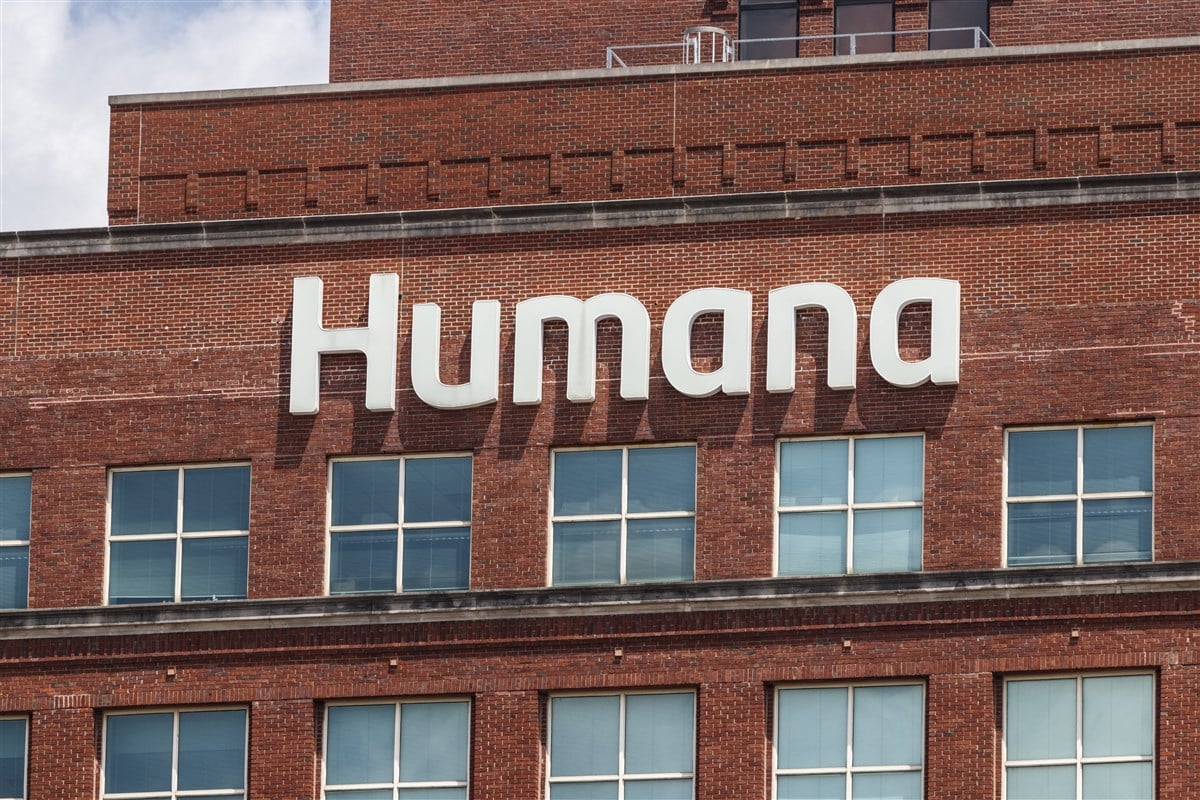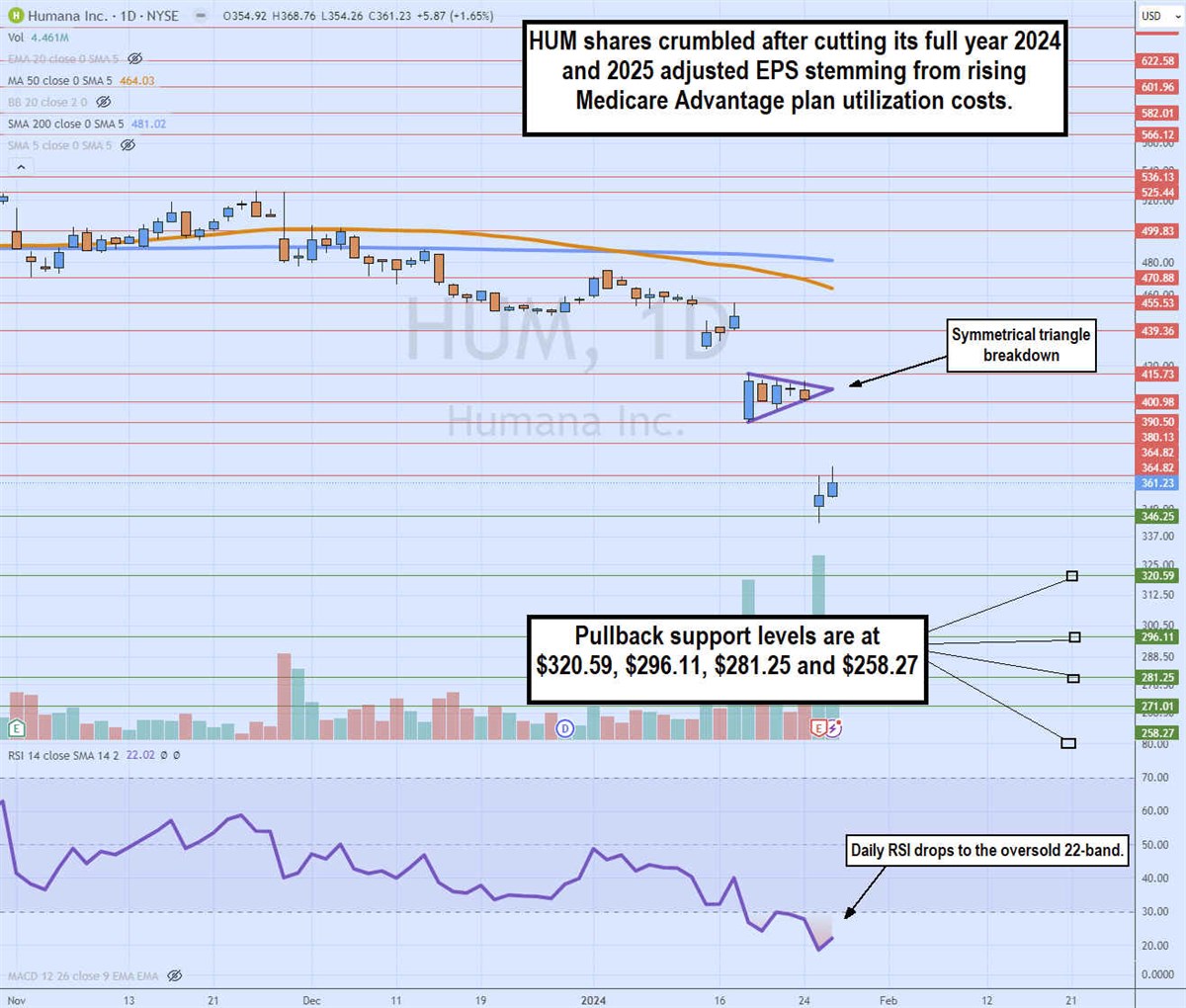
Health insurance carrier Humana Inc. (NYSE: HUM) reported a bombshell when it released its fourth-quarter 2023 earnings report. The company not only missed its estimated EPS by a mile but also slashed its 2024 and 2025 EPS guidance by more than 50% to 75%, respectively. The culprit was increased medical costs for its Medicare Advantage plan members. This completely blindsided analysts and investors as shares collapsed over 10%, taking other healthcare insurers in the medical sector down with it. Could this jeopardize Medicare Advantage plans moving forward?
Traditional Medicare
Traditional Medicare is a federal government-sponsored health insurance plan for Americans aged 65 or older. Medicare Part A covers hospital insurance, and Medicare Part B covers medical insurance with providers. Medicare Part D is the prescription drug program. Medicare premiums are usually taken directly out of Social Security payments. Under traditional Medicare, doctors would bill Medicare under the Medicare fee schedule for reimbursement under a fee-for-service model, receiving 80% from Medicare, and the 20% remainder would be the patient's responsibility. Elderly patients would have to find other healthcare coverage for prescription medications and pay for Medigap insurance to cover additional out-of-pocket costs. The co-payments can add up since elderly patients tend to have the most health issues and the highest medical costs. It's only logical.
Medicare Advantage to the rescue
Medicare Advantage is a managed care style of healthcare, which incorporates capitation, a flat monthly payment to providers based on how many members sign up as primary care doctors. Members must go to in-network doctors and providers for their medical care. In exchange, members are free from out-of-pocket costs like the 20% they would pay with traditional Medicare. Some plans may require a co-pay per visit. Additionally, Medicare Advantage plans tend to include prescription drug coverage. In essence, elderly patients have all their medical care covered, including prescription drugs, for an average cost of $18.50 a month. This could mean thousands of dollars in annual savings, especially if they have a disease or cancer.
The cost of Medicare Advantage plans
While Medicare Advantage plans will differ across insurers, patients, and providers, it's generally considered "managed care." Seniors who sign up for a Medicare Advantage plan usually pay anywhere from $0 to $50 a month in out-of-pocket premiums, averaging $18.50 in 2024 on top of the $174.70 taken out of Social Security per month. Good for the patient and supposedly very good for the insurer, as evidenced by the billions in annual earnings for the largest Medicare Advantage providers like UnitedHealth Group Inc. (NYSE: UNH), Humana, and CVS Health Co. (NYSE: CVS) owned Aetna. Check out the sector heatmap on MarketBeat.
The math doesn't add up
According to an RBC report, the projected lifetime cost of care for a "healthy" 65-year-old is $404,253, which doesn't factor in long-term care. The average annual healthcare spend for the elderly ages 65 to 75 is $13,000 annually. From ages 75 to 84, that more than doubles to $24,000 per year. Above the age of 85, the spending rises to $39,000 annually.
If we assume the monthly cost of a Medicare Advantage plan is $200, comprised of $175 for Medicare Part B premium taken directly from Social Security and a $25 monthly premium from the patient, that comes to $2,400 a year that is being paid to insurers like Humana to pay for $13,000 worth of average medical costs per member, which is $2,400 - $13,000 = ($10,600). Where is the profit in that equation?
Medicare Advantage plans are a dirty little secret
So far, we've covered two parts of the healthcare equation. We can see how the patients benefit, and the profits are massive for the insurers. The third part of the equation is the providers, the doctors. While patients enjoy cost savings and insurers enjoy steady and consistent cash flow and profits, the doctors are another story. Insurers will promote their use of data analytics, preventative care, growing efficiencies, cost containment and risk mitigation strategies, provider networks, evidence and value-based care, and so forth as to how they are making such large profits.
Providers will argue that the simple reason insurers are making so much money is because they are getting paid so much less. The providers are getting squeezed in the form of reduced payments, arduous authorization procedures and claim denials. There's no shortage of news stories everywhere about how doctors are so fed up with Medicare Advantage plans that they're refusing to accept them.
Is the jig up?
This could be the case if Humana's warning is evidence. On January 25, 2024, Humana reported its Q4 2023 earnings for a loss of 11 cents, missing analyst estimates by $1.03. Revenues still rose 17.93% to $26.46 billion, beating analyst expectations by $884.82 million. The company signed up another 100,000 new Medicare Advantage plan members during open season, or 1.8% growth. However, they dropped two bombs that shocked analysts and shareholders.
Dropping the bombshells
Humana cut its full-year 2024 Adjust EPS guidance to $16.00 versus $29.14 consensus analyst estimates. It went further to cut its full-year 2025 Adjusted EPS guidance to a range of $6.00 to $10.00, down from its previous guidance of $37.00. Human pointed out the abnormally large "inpatient utilization trends" with Medicare Advantage members in November and December. However, these aren't one-offs since they cut their EPS guidance through 2025. Are older people just suddenly getting sicker, or is this a tipping point?
Human CEO Bruce Broussard commented, "We are disappointed in the update provided today. The Medicare Advantage sector is navigating a complex and dynamic period of change as we are all working through significant regulatory changes while also absorbing unprecedented increases in medical cost trends." Get AI-powered insights on MarketBeat.
Will the other shoe drop?
Analysts were completely blindsided since the largest Medicare Advantage insurer, United Healthcare, didn't report such a drastic guidance cut. United Healthcare earned $5.83 per share, missing analyst estimates by 15 cents. Revenues grew 14.1% YoY to $94.43 billion, beating analyst estimates of $92.13 billion. They did note that the full-year medical care ratio (MCR) did an uptick slightly to 83.2% compared to 82% in the prior year, driven by a surge in outpatient care for seniors.
MCR is the percentage of premiums used to pay claims. It's value-based care (VBC) patients jumped 28% YoY. They expect to add 400,000 to 500,000 more Medicare Advantage members in 2024. Analysts still expect UnitedHealth Group to generate adjusted EPS of $27.84 to $28.18 in 2024. The question lingers whether Humana is a company-specific problem or a sign of things to come for the Medicare Advantage plan insurance industry.
Humana analyst ratings and price targets are at MarketBeat. Humana peers and competitor stocks can be found with the MarketBeat stock screener.
 =
=
Daily symmetrical triangle and Death Cross breakdown
The daily candlestick chart on HUM illustrates a symmetrical triangle breakdown and a Death Cross breakdown. The Death Cross occurred when the daily 50-period moving average (MA) crossed down through the daily 200-period MA. HUM shares also formed the symmetrical triangle after its gap down on January 18, 2024, at $390.50 and recovery attempt at $415.73 as lower highs formed on UnitedHealth Group's earnings release. However, the triangle breakdown formed on a gap down on January 24, 2024, when the EPS guidance cut was announced by HUM, which fell to a low of $342.69 before attempting a rebound. The daily relative strength index (RSI) fell to the 22-band oversold level. Pullback support levels are at $320.59, $296.11, $281.25 and $258.27.












